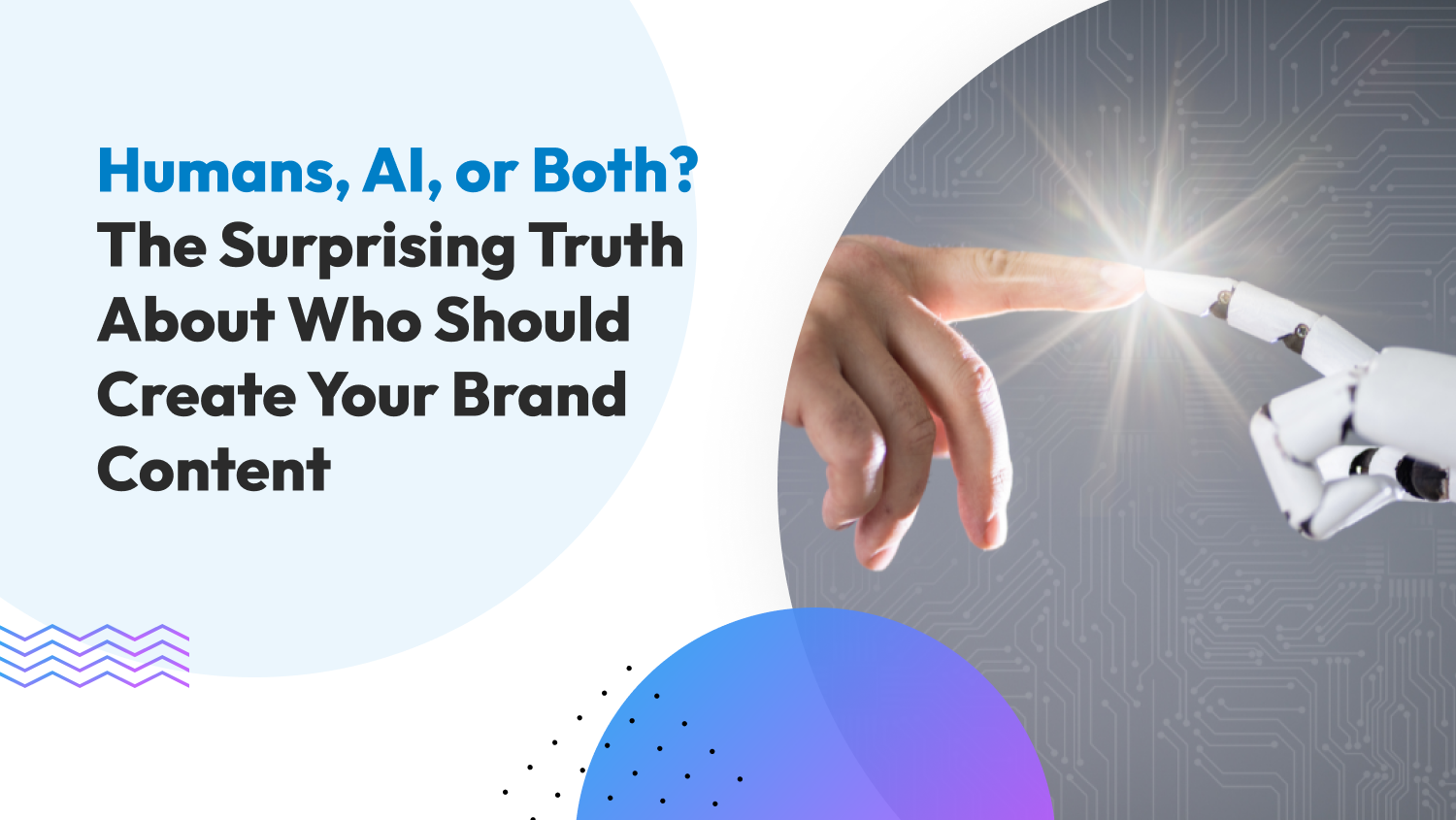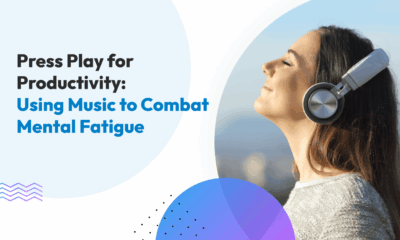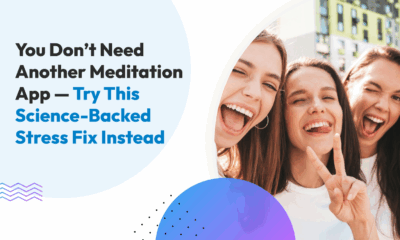Science Says
Humans, AI, or Both? The Surprising Truth About Who Should Create Your Brand Content
We’re constantly balancing the need to educate, inform, and connect with our audiences against the time and resources it takes to produce high-quality content. Generative AI tools capable of drafting blog posts, social media captions, creating graphics, and videos have been game changers in terms of cost and efficiency. But do you wonder: Does it matter to your audience who (or what) creates your educational content?
A recent study in Italy by Roberta De Cicco and colleagues tackles this question head-on. They compare how audiences assess educational marketing content on Instagram when they are told it was made by AI, by humans, or by a hybrid AI-human team. The findings are very encouraging for AI-assisted content creation with human oversight.
Let’s break down the experiments and the implications for how you can maximize AI for better audience engagement and advocacy for your brand.
People Didn’t Discriminate Between the Quality of AI-made versus Human-Made Content
In the first experiment in this study, 172 participants were shown an Instagram carousel about energy conservation for a fictitious fashion brand. The carousel shown to all participants was identical; the only variable was an introductory disclosure indicating to some that the post was entirely AI-generated, while some were informed it was human-made. Then they were asked to evaluate content quality – whether they felt the post was interesting, accurate, and valuable to them.
The result is surprising: there was no significant difference in the assessment of content quality, whether participants were told it was AI or human-made.
Action Item: For those who still hesitate to incorporate generative AI in their content creation process, perception of inferior quality or bias against AI use may be one of your reasons. But the reaction of the participants to this experiment suggests that when it comes to content quality, audiences may not have an outright preference for human or AI-made.
Read on to find out what other factors are more important for our audiences, and which translate to better outcomes for your brand.

Human Authors, Not Content Quality, Drive Consumer Engagement
The researchers initially hypothesized that perceived content quality was going to be a major influence on audience engagement. But that didn’t turn out to be true. Even though participants in this first experiment viewed AI and human content were the same in terms of quality, they felt more interested and connected when the content was labelled human-made.
It seems like knowing content is human-made predisposes audiences to be more receptive and want to interact with it. Researchers think this is rooted in speciesism or social identity theory, basically referring to the notion of ‘us vs them’, human creators vs non-human. Knowing content is human-made seems to instinctively generate trust, an emotional bond, and a sense of shared identity, which pure AI content lacks.
Action Item: When it comes to building that trust and connection with your audience, creating the perfect, high-quality post isn’t as important as the human element.
Audiences want to feel understood, that the author empathizes with them and has similar struggles. So, if you use AI for content creation, make sure that relatability and empathy come through. Write in your voice, inject personalized content, humor, and real-life examples.

AI-Human Collaboration Works for Encouraging Engagement and Positive Attitudes Towards a Brand
A second experiment was done where the same Instagram carousel was presented to another group of 158 participants. Some were told it was made entirely by AI, some were told it was human-made, and a third group was told it was created by an AI-human collaboration.
Specifically, the hybrid AI-human collaboration was described as, “created by a team of in-house employees who use AI to generate a draft of texts and achieve a better visual result.” They were again asked about how engaged they felt with the content, whether they liked or disliked the brand (brand attitude), and whether they would recommend it to friends or family (brand advocacy).
Human-only and AI-human hybrid-authored content both outperformed AI-only labelled content in terms of customer engagement. Brand attitude and brand advocacy intention likewise were higher for human-only and AI-human hybrid-authored content, significantly better than AI-only content.
Another interesting finding — contrary to the researchers’ hypothesis —pure human authorship was not clearly superior to AI-human authorship. There was no significant difference in the impact on the three variables of engagement, brand attitude, and advocacy between human-authored versus AI-human hybrid-made content.
Action Item: This finding further affirms that AI tools with human oversight can help you achieve efficiency without sacrificing engagement and positive impressions of your brand.
Create a systematic process for human-AI collaboration: use AI for research, brainstorming, drafting, and generating multiple options, then have human creators select the best elements, refine messaging, bring in the personal stories, and add brand voice.
Explicit Disclosure of Content Origin Can Shape Consumer Response
Since the Instagram carousels used in all the experiments were identical, the researchers effectively isolated the impact on audiences of knowing who or what created the content before they see it. The results clearly illustrate that simply telling consumers content is AI-generated can reduce engagement and negatively impact brand attitude and advocacy. On the flip side, disclosing that content was created by an AI-human team doesn’t negatively impact consumer perceptions compared to human-only content.
What could be the reason for this difference in perception? It wasn’t due to discomfort regarding the reliability and ethics of AI content, since the experiment controlled for variables like age, gender, and technology anxiety. Expanding on the social identity theory mentioned earlier (us vs them), researchers believe consumers have an inherent positive bias toward humans rather than a strong aversion to AI.
Action Item: Explicit disclosure for certain AI-created content is required under a recently enacted European Union Law (EU AI Act). This is particularly relevant to this study, which was conducted in Italy, but no such regulation exists (yet!) for the US.
But this experiment suggests that transparency about using AI won’t hurt audience engagement and brand outcomes, as long as there is human involvement in your content creation. You can even talk about your process and how AI tools help you. Emphasizing the human component while highlighting the benefits of maximizing AI brings together the best of both worlds: efficiency and relatability.

Perceptions of AI-Generated Content Are neither Universally Negative nor Entirely Positive
A science-related topic, like the one used in this experiment, is expected to rely on research and provide accurate facts, things for which properly prompted and vetted AI output can be very helpful.
But what about content aimed to entertain, creative or artistic works of self-expression, or news articles? Would people have the same view when it comes to content quality, and similar levels of engagement and brand loyalty if AI were used by human content creators? How about if AI authorship is not disclosed?
Previous studies show varying results. For example, in this study conducted in Japan comparing human vs AI vs AI-human-written haikus, respondents gave the AI-human-written haikus the highest beauty ratings.
Another study in China compared the effectiveness of AI-made vs human-made promotions of an online game on environmental protection. They found AI recommendations more effective. This study from South Korea found that people had difficulty distinguishing between AI and human art accounts but gave similar artistic quality ratings to content made by AI and those by human influencers.
Action Item: Consumers’ preferences and expectations of AI content are evolving as the technology improves and becomes more widely used. In the recent studies, it seems like content quality is no longer an issue, but ultimately, the level of connection through the author’s perceived likeness to ourselves and the empathy, emotional depth, creativity, and authenticity that comes with that.
Stay informed about changing consumer attitudes toward AI-generated content. Consider conducting small tests with your specific audience to understand their preferences regarding human versus AI content in your industry and how you disclose it, as reactions may vary over time and by type of content and target demographic.
Limitations of the Study
We highlight a few other limitations of this study that you should take into consideration when applying the findings to your own content creation process. First, the experiments were done in Italy, where cultural attitudes toward AI, social media behaviors, and brand perceptions may differ from other countries or contexts.
Participants were always told who created the content (AI, human, or both), which is not always the case in real life, and consumer reactions might differ if the source is ambiguous or undisclosed. The study also measured people’s immediate reactions, not long-term effects or actual behaviors like sharing or recommending the brand over time.
Finally, the specific psychological and cognitive factors that connect the content creator to audiences can be studied on a more granular level. What specific human attributes do people look for that trigger engagement, positive attitudes, and advocacy for a brand?
Wrap Up
Attitudes toward AI in content creation are definitely evolving. This study shows that while people are warming up to AI’s role behind the scenes, context still matters. For educational content, audiences don’t seem to care much about who or what writes the post when it comes to quality. But they do pay more attention and feel more connected when there’s a clear human touch. Your stories, your voice, and your perspective are what really spark engagement and build those positive brand connections.
As AI tools keep getting smarter, don’t be afraid to let them handle the heavy lifting in your content creation workflow. Use them to save time and boost your creativity but always add your own insights and personality. Keep an eye on how your audience responds and be ready to adjust your approach. When you find that sweet spot between efficiency and authentic connection, you’re not just building an engaged and loyal audience—you’re paving the way for those relationships to turn into real, paying customers down the line.












